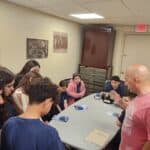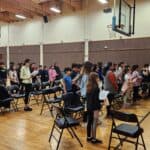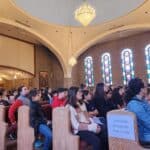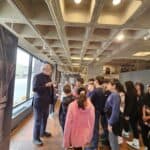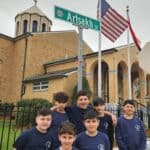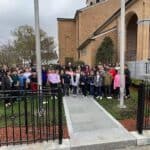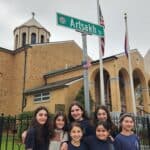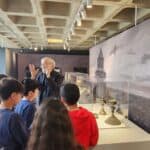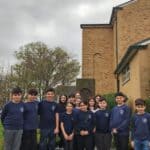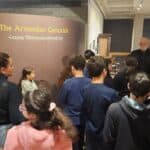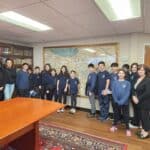MOURAD SCHOOL STUDENTS VISIT ARMENIAN WATERTOWN
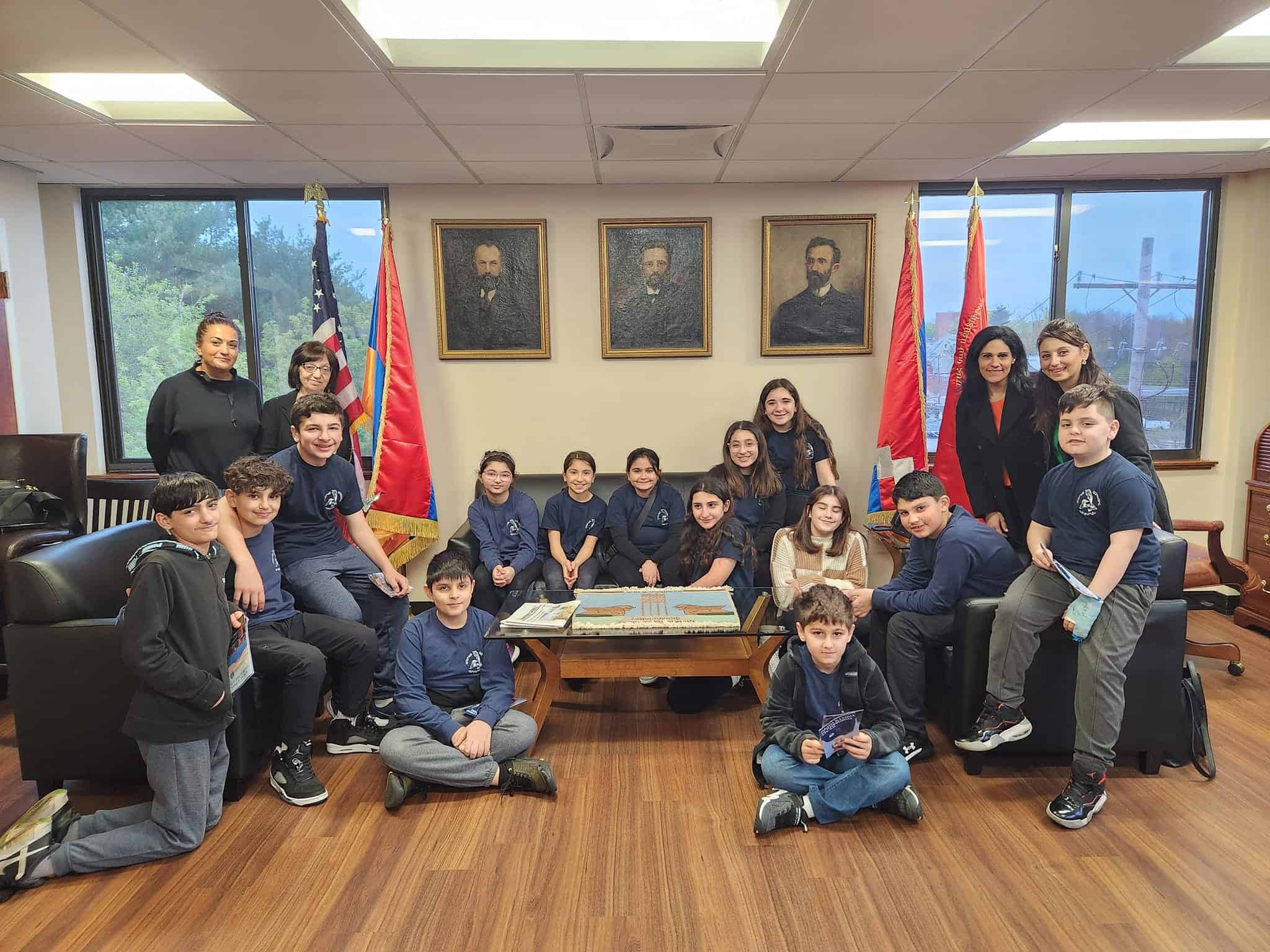
On Saturday, April 22, the students of the Mourad Armenian Saturday School (Providence, Rhode Island) visited Watertown, MA, accompanied by co-principal Lala Attarian, instructor Angel Kozinian and chaperones Sonia Nasr and Haigouhi Corriveau.
The goal of this educational trip was to learn more about the history of Armenians in Watertown and visit major Armenian institutions that have had a great impact in preserving the language, culture, religion and history of Armenians for generations.
The first stop was the Hairenik Association, where the students were welcomed by George Aghjayan, ARF Eastern USA Central Committee member, and Vart Chiloyan, ARS Eastern USA Regional Office executive director. Mrs. Chiloyan introduced the various local and regional ARS projects and talked about the importance of preserving the Armenian schools in the Diaspora. The students thanked the ARS in person for supporting the Mourad Armenian Saturday school students and teachers.
Mr. Aghjayan gave the tour of the Hairenik building, including the offices of the “Armenian Weekly” and “Hairenik” newspapers, the newly build media center, and most importantly, the ARF archives, including the archives of the First Republic of Armenia. The students were all excited to see and read the original copy of the 1918 Declaration of Independence of Armenia.
Following the Hairenik Association, the group walked to the St. Stephen’s Armenian Saturday School where they were welcomed by the principal, Mayda Melkonian, and the teachers. The group met their peers and taking advantage of music class, they all sang together before heading to St. Stephen’s Armenian Apostolic Church. Rev. Fr. Antranig Baljian welcomed both groups and on the 108th anniversary of the Armenian Genocide, Fr. Antranig explained to the students about the canonization of Armenian Martyrs.
Lastly, the Mourad school students visited the Armenian Museum of America. Curator Gary Lind-Sinanian engaged the students as he was explaining about the treasured items, some of them dating back to the Urartu era. History, culture, embroidery, and religion were all intertwined as students were listening to the curator and asking questions. It was not surprising at all to see their impression when they got to see the exhibit on the Armenian Genocide.
We thank all individuals and institutions who helped us make this trip a memorable one. This unique field trip inspired the young students as we are commemorating the 108th anniversary of the Armenian Genocide. We hope this is the beginning of a continuous plan to bring the students at our schools together while they learn about the history of Armenian communities and institutions.

